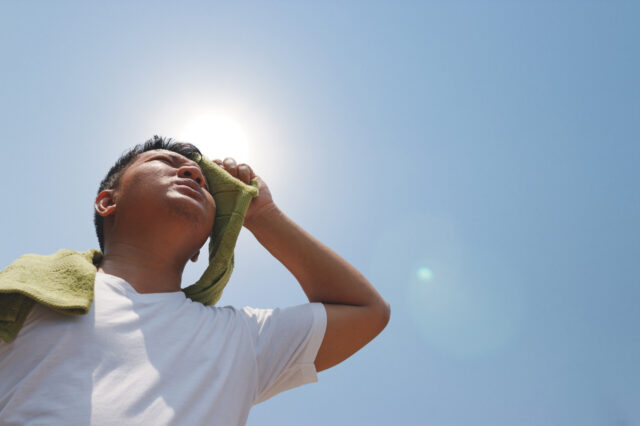How to Spot Heat Illness

This Fourth of July holiday weekend, we saw not only record travel but record-breaking heat across the South, with heat indexes reaching 115-plus degrees and Florida being one of many hot spots. Knowing summer is in full swing, keep reading to know how to recognize symptoms of heat illness if you’re working outside, as well as how to administer first aid before a situation becomes urgent. One of the best tips is knowing the difference between heat strokes and heat exhaustion.
What is a heat stroke?
First, let’s define a heat stroke. It’s when the body is so overheated it can no longer self-regulate temperature. This is when sweating has not been effective, therefore not allowing the body to cool down. Body temperatures can reach 106 degrees and higher if not treated within the first 10 minutes of occurrence. There are long-term health effects of heat stokes, including long-term disability or death, very similar to the side effects of a stroke. People most effected are those who work outside or exercise in heat, but anyone can experience heat stroke if they are unprepared.
Main symptoms
- Confusion, slurred speech
- Unconsciousness or passing out, fainting
- Dry, hot skin, or excessive sweating
- Seizures
- Very high body temperature
Treatment/first aid
- Call emergency services
- Get somewhere cool or shaded immediately
- Stay with the effected until help arrives
- Use cold water or ice bath
- Wet skin
- Cool and wet cloths applied to the skin
- Soak clothes with cool water
What is heat exhaustion?
Heat exhaustion is the body responding to dehydration. This means an extreme loss of water and salts through lots of sweating. People most effected are those who are elderly, with high blood pressure, diabetes, and those working in hot environments like greenhouses and nurseries.
Main symptoms
- Headache
- Nausea
- Dizziness
- Weakness
- Irritability
- Excessive thirst
- Heavy sweating
- High body temperature
- Decreased/no urination
Treatment/first aid
- Call emergency services or take person to ER or urgent treatment
- Stay with person at all times until help arrives
- Remove from hot area into well-ventilated and cool area
- Remove clothing like shoes and socks
- Use cold water or ice bath
- Wet skin
- Cool and wet cloths applied to the skin
- Soak clothes with cool water
- Sip cool water
Knowing the symptoms and how to treat heat stroke and heat exhaustion can be life or death for those experiencing it. First aid for both heat stroke and heat exhaustion is very similar to each other, which is useful.
The best way to treat is prevention. Be sure to stay hydrated if you find yourself working outside. Little realize this, but hydration starts the night before. Remind workers to take all their breaks in shaded or cooled areas, and provide water and sport drinks that contain electrolytes. Have a plan in place in case of an emergency of this nature.